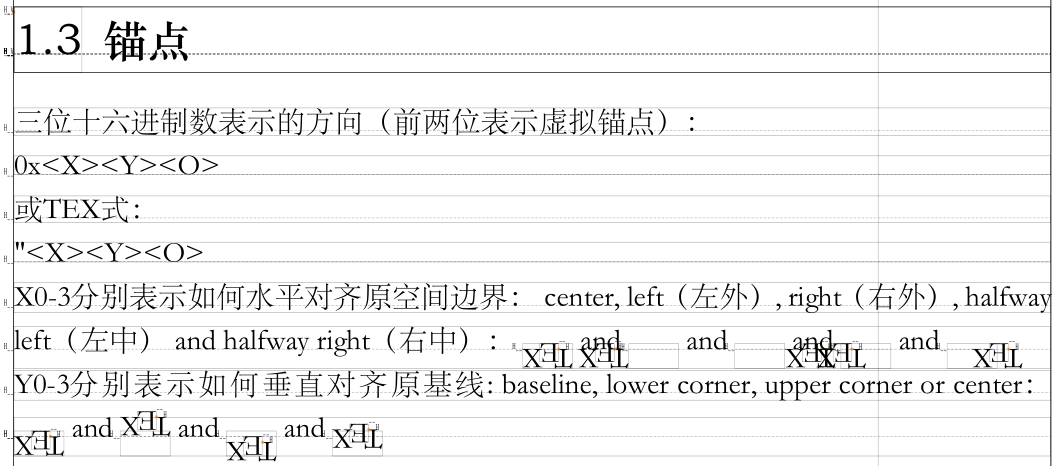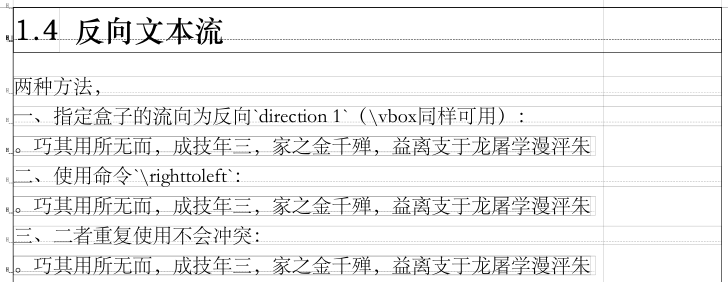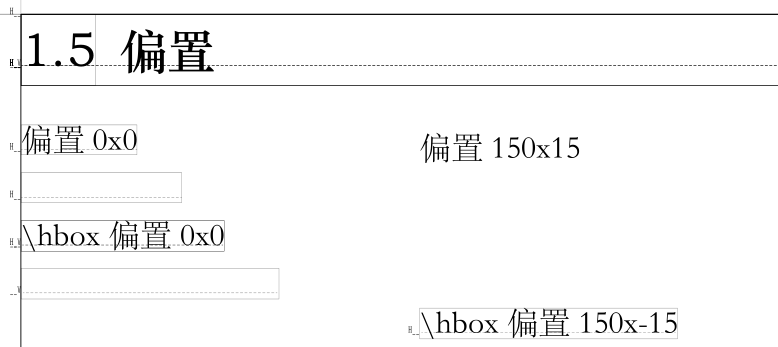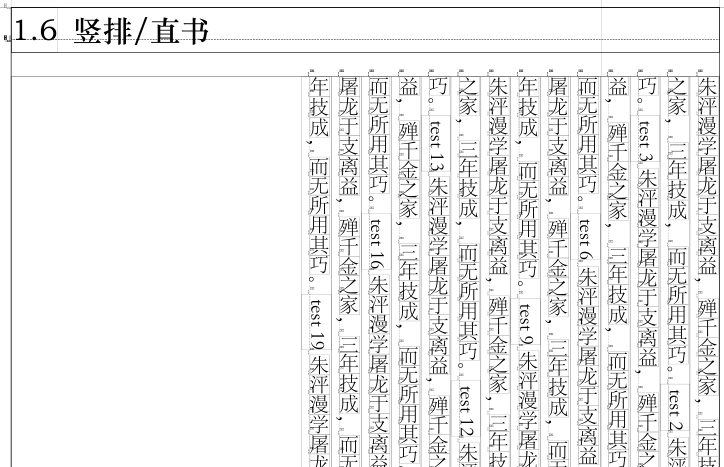1
2
3
4
5
6
7
8
9
10
11
12
13
14
15
16
17
18
19
20
21
22
23
24
25
26
27
28
29
30
31
32
33
34
35
36
37
38
39
40
41
42
43
44
45
46
47
48
49
50
51
52
53
54
55
56
57
58
59
60
61
62
63
64
65
66
67
68
69
70
71
72
73
74
75
76
77
78
79
80
81
82
83
84
85
86
87
88
89
90
91
92
93
94
95
96
97
98
99
100
101
102
103
104
105
106
107
108
109
110
111
112
113
114
115
116
117
118
119
120
121
122
123
124
125
126
127
128
129
130
131
132
133
134
135
136
137
138
139
140
141
142
143
144
145
146
147
148
149
150
151
152
153
154
155
156
157
158
159
160
161
162
163
164
165
166
167
168
169
170
171
172
173
174
175
176
177
178
179
180
181
182
183
184
185
186
187
188
189
190
191
192
193
194
195
196
197
198
199
200
201
202
203
204
205
206
207
208
209
210
211
212
213
214
215 | % \setuppapersize[A4][A4]
% \setuplayout[
% backspace=20mm,
% width=160mm,
% topspace=20mm,
% header=0mm,
% footer=0mm,
% height=250mm
% ]
% 根据 https://wiki.contextgarden.net/Chinese_Japanese_and_Korean
\mainlanguage[cn]
\language[cn]
\enableregime[utf]
\setscript[hanzi] % hyphenation
% 启用字体
\usetypescriptfile[mscore]
% \setupbodyfont [mschinese-literate,12pt]
\usebodyfont [mschinese,12pt]
% \usebodyfont [mschinese-light,12pt]
% \usebodyfont [mschinese-literate,12pt]
% \definebodyfontenvironment[24pt]
% \definebodyfontenvironment[18pt]
% \setuppagenumber [numberconversion=cn]
% \definestructureconversionset[chinese][numbers][cn]
% 章节序号
% \setupheads [sectionconversionset=chinese]
% \define[2]\ChineseChapter{第#1章 #2}
% \setuphead[chapter][command=\ChineseChapter,style={\bf\switchtobodyfont[24pt]}]
\setuphead[section][style={\bf\switchtobodyfont[18pt]}]
% \setuppagenumbering[state=start,
% alternative=singlesided,
% location={footer, center},
% style={\bf\switchtobodyfont[11pt]}
% ]
% \definefont[kaiti][name:kaiti*default at 24pt]
% \usemodule[zhspuncs]
% 行距
\setupinterlinespace[line=1.5em]
% 显式信息
\showboxes
% \showmakeup
\starttext
\section{朝向 orientation}
\subsection{使用与嵌套使用}
无朝向: This is a \LUAMETATEX\ goodie.
整体朝下: \hbox orientation 2{This is a \LUAMETATEX\ goodie.}
局部朝下: This is a \hbox orientation 2{\LUAMETATEX} goodie.
整体朝下、局部再朝下: \hbox orientation 2{This is a \hbox orientation 2{\LUAMETATEX} goodie.}
\subsection{6种朝向}
orientation 0—5:
\hbox orientation 0 {\TEX} and
\hbox orientation 1 {\TEX} and
\hbox orientation 2 {\TEX} and
\hbox orientation 3 {\TEX} and
\hbox orientation 4 {\TEX} and
\hbox orientation 5 {\TEX}
\subsection{锚点}
三位十六进制数表示的方向(前两位表示虚拟锚点):
0x<X><Y><O>
或TEX式:
"<X><Y><O>
X0-3分别表示如何水平对齐原空间边界: center, left(左外), right(右外), halfway left(左中) and halfway right(右中):
\hbox orientation "002 {\TEX} and
\hbox orientation "102 {\TEX} and
\hbox orientation "202 {\TEX} and
\hbox orientation "302 {\TEX} and
\hbox orientation "402 {\TEX}
Y0-3分别表示如何垂直对齐原基线: baseline, lower corner, upper corner or center:
\hbox orientation "002 {\TEX} and
\hbox orientation "012 {\TEX} and
\hbox orientation "022 {\TEX} and
\hbox orientation "032 {\TEX}
\page
\subsection{反向文本流}
两种方法,
一、指定盒子的流向为反向`direction 1`(\string\vbox同样可用):
\hbox{\hbox
orientation 0
direction 1
{朱泙漫学屠龙于支离益,殚千金之家,三年技成,而无所用其巧。} }
二、使用命令`\string\righttoleft`:
\hbox{\hbox
orientation 0
direction 0
{\righttoleft 朱泙漫学屠龙于支离益,殚千金之家,三年技成,而无所用其巧。} }
三、二者重复使用不会冲突:
\hbox{\hbox
orientation 0
direction 1
{\righttoleft 朱泙漫学屠龙于支离益,殚千金之家,三年技成,而无所用其巧。} }
\subsection{偏置}
\hbox{偏置 0x0}
\hbox
orientation 0
xoffset 150pt
yoffset 15pt
{偏置 150x15}
\vbox
orientation 0
{\hbox{\string\hbox\ 偏置 0x0}}
\vbox
orientation 0
xoffset 150pt
yoffset -15pt
{\hbox{\string\hbox\ 偏置 150x-15}}
\subsection{竖排/直书}
\startluacode
local glyph_id = node.id("glyph")
local fontdata = fonts.hashes.identifiers -- assumes generic font loader
--判断是不是汉族(是否需要直排)
local function is_vertical(c)
-- 常用的汉字编码范围,还有更多
return c >= 0x04E00 and c <= 0x09FFF
end
-- 处理程序,输入一个盒子号码
function document.go_vertical(boxnumber)
local box = tex.getbox(boxnumber)
local n = box.list
while n do
if n.id == glyph_id and is_vertical(n.char) then
local o = .2 * fontdata[n.font].parameters.xheight
local prev, next = n.prev, n.next
n.next, n.prev = nil, nil
local l = nodes.new("hlist")
l.list = n
local w, h, d = n.width, n.height, n.depth
if prev then
prev.next, l.prev = l, prev
else
box.list = l
end
if next then
l.next, next.prev = next, l
end
l.width, l.height, l.depth = h + d + o, w, 0
l.orientation = 0x003
l.xoffset, l.yoffset = o/2, -o/2
l.hoffset, l.doffset = h, d - o
n = next
else
n = n.next
end
end
end
\stopluacode
% 调整非中文的偏置
\unexpanded\def\stripe#1%
{\hbox orientation 0 yoffset .2\exheight{\strut #1}}
% 生成一个横向盒子(测试材料)
\newbox\MyVerticalBox
\setbox\MyVerticalBox\hbox \bgroup
\startscript[hangul]%
\dorecurse{20}{%
朱泙漫学屠龙于支离益,殚千金之家,三年技成,而无所用其巧。%
\stripe{ test #1} }%
\unskip % remove last space
\stopscript
\egroup
% 处理盒子
\ctxlua{document.go_vertical(\number\MyVerticalBox)}
% 解开盒子重排在\ruledvbox
\ruledvbox orientation 1 to \textwidth \bgroup
% \setupinterlinespace[40pt]
\hsize .92\textheight
\unhbox\MyVerticalBox
\vfill
\egroup
% 还需要处理标点等问题
\stoptext
|




